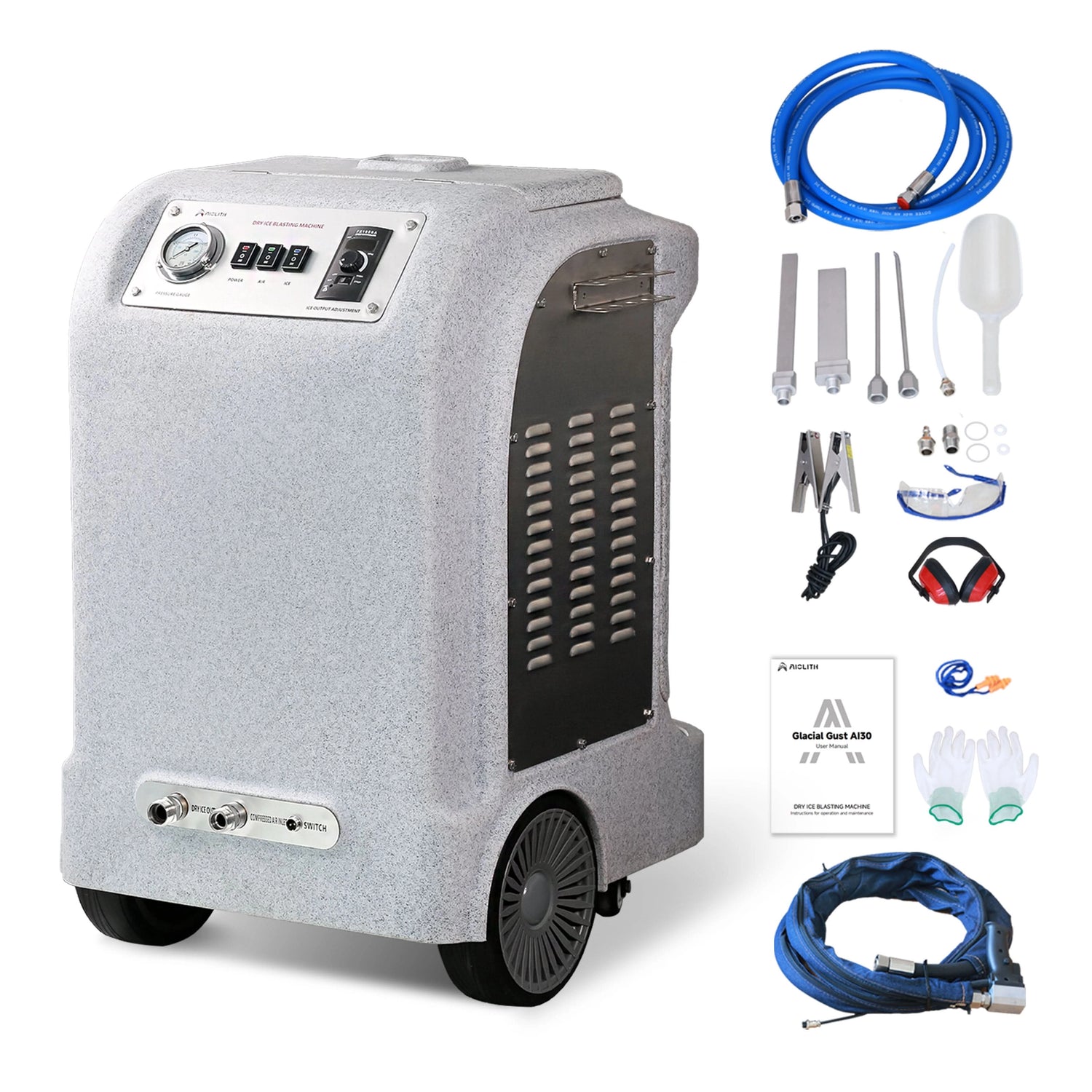Which Type of Scrubber Is Best? 8 Key Insights Every Business Owner Must Know Before Choosing
Share
Why Choosing the Right Scrubber Matters
The wrong floor scrubber can cost a business thousands in maintenance, wasted labor hours, and safety risks. Asking “Which type of scrubber is best?” is more than a purchasing decision—it’s about ensuring cleaner floors, safer environments, and reduced long-term costs.
Research published in the Journal of Occupational and Environmental Hygiene (Anderson & Meinke, 2021) confirms that mechanized floor cleaning significantly improves hygiene outcomes and reduces workplace accidents compared to traditional methods.
The Two Main Types of Floor Scrubbers
1. Walk-Behind Scrubbers
- Designed for small to medium facilities.
- Easy to maneuver in tight spaces like classrooms, corridors, and retail stores.
- Lower initial cost compared to ride-on machines.
- Suitable for businesses with limited budgets.
2. Ride-On Scrubbers
- Best for large, high-traffic environments like airports, warehouses, or hospitals.
- Faster cleaning speeds and higher productivity.
- Requires more storage space and higher upfront investment.
- Reduces operator fatigue with sit-down functionality.
Comparison Table: Walk-Behind vs. Ride-On Scrubbers
| Criteria | Walk-Behind Scrubber | Ride-On Scrubber | Aiolith Advantage |
|---|---|---|---|
| Facility Size | Small to medium (under 5,000 m²) | Large (over 5,000 m²) | Models for both applications |
| Ease of Use | Compact, simple to operate | Higher efficiency, less manual effort | Intuitive controls for all operators |
| Cleaning Speed | Moderate | Very fast | Optimized brush pressure and suction systems |
| Cost | Lower upfront cost | Higher upfront, faster ROI | Built for durability and cost-effectiveness |
| Best Use Case | Schools, offices, retail stores | Airports, malls, warehouses, hospitals | Flexible product line to meet both needs |
Other Factors That Influence Scrubber Choice
Floor Type
Tile, vinyl, and concrete floors require different brushes or pads. Aiolith scrubbers are built with adjustable brush pressure to protect sensitive floors while tackling tough dirt.
Cleaning Frequency
Facilities with high foot traffic benefit from daily scrubbing. Smaller offices may only need weekly cleaning, which impacts machine size selection.
Power Source
- Battery-powered scrubbers: Safer, cordless, better for large areas.
- Corded scrubbers: Cost-effective for small spaces with easy outlet access.
Safety and Hygiene Needs
The Health and Safety Executive (HSE, 2020) (source) highlights that scrubbers reduce slip hazards due to faster drying, making them a safer option than mopping.
Why Aiolith Scrubbers Are Among the Best
Businesses that choose Aiolith floor scrubbers experience clear advantages:
- Hybrid sweeping + scrubbing systems to save preparation time.
- Durable construction that withstands heavy daily use.
- Energy-efficient motors that lower long-term operating costs.
- Superior suction systems that leave floors nearly dry.
- Wide range of models, ensuring the right fit for both small and large facilities.
These features directly address the pain points of high labor costs, floor safety, and cleaning consistency.
Cost Analysis: Traditional Cleaning vs. Aiolith Scrubbers
| Factor | Traditional Mopping | Generic Scrubber | Aiolith Scrubber |
|---|---|---|---|
| Upfront Cost | $50–$200 | $4,000–$10,000 | $5,000–$15,000 |
| Labor Costs (Annual) | High, labor-intensive | Medium | Low, efficient |
| Water & Chemical Use | High | Moderate | Low, efficient systems |
| Durability | Short lifespan | Moderate | High, built for long-term use |
| ROI Timeline | None | 2–3 years | 18–24 months |
Environmental and Health Benefits of Scrubbing
- Lower water consumption compared to mopping.
- Reduced chemical exposure for staff.
- Cleaner indoor air quality due to fine dust removal.
- Immediate floor drying, lowering slip risks.
The Centers for Disease Control and Prevention (CDC, 2020) (source) emphasizes that mechanized cleaning reduces microbial contamination, protecting both employees and customers.
FAQ: Which Type of Scrubber Is Best?
Q1: Should I choose a walk-behind or ride-on scrubber?
A: Walk-behind scrubbers are best for small to medium spaces, while ride-on scrubbers are ideal for large, high-traffic facilities.
Q2: Are Aiolith scrubbers worth the investment?
A: Yes. While they cost more upfront, they save significantly on labor, water, and maintenance over time.
Q3: Can scrubbers replace mopping entirely?
A: In commercial environments, yes. Spot cleaning may still require a mop, but scrubbers deliver deeper and faster results.
Q4: How long does an Aiolith scrubber last?
A: With proper maintenance, typically 7–10 years.
Q5: Are scrubbers safe for delicate flooring?
A: Yes. Aiolith machines feature adjustable pressure to protect sensitive surfaces.
Conclusion: Choosing the Best Scrubber for Your Facility
So, which type of scrubber is best? The answer depends on your facility’s size, floor type, and cleaning needs. For small to medium areas, walk-behind scrubbers are effective. For large, high-traffic environments, ride-on scrubbers deliver unmatched efficiency.
With Aiolith floor scrubbers, businesses gain access to durable, efficient, and versatile machines designed to meet both small and large-scale cleaning challenges—ensuring safer, cleaner, and more cost-effective operations.
References
Anderson, J., & Meinke, H. (2021). Occupational hygiene and floor maintenance practices in commercial settings. Journal of Occupational and Environmental Hygiene, 18(6), 329–339. Read here.
Health and Safety Executive (HSE). (2020). Preventing slips and trips at work. Available here.
Centers for Disease Control and Prevention (CDC). (2020). Environmental cleaning and disinfection recommendations. Available here.

